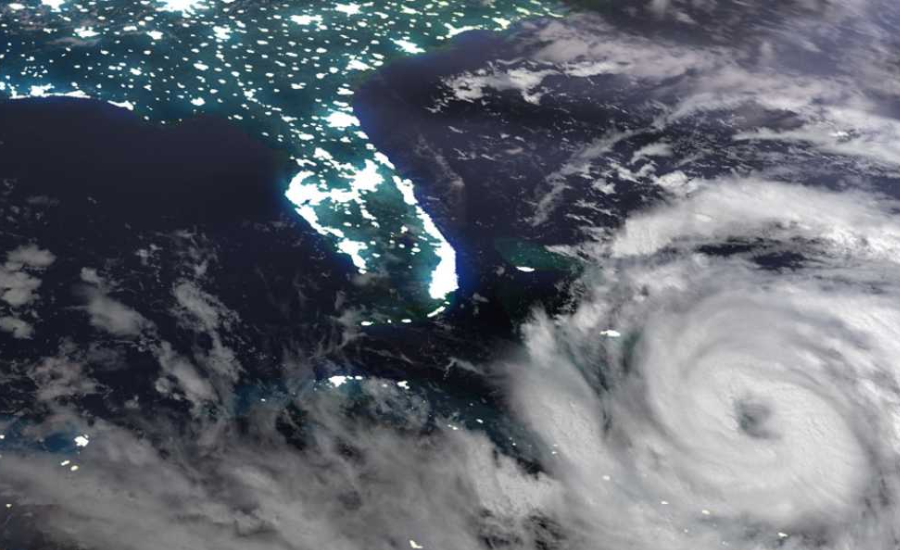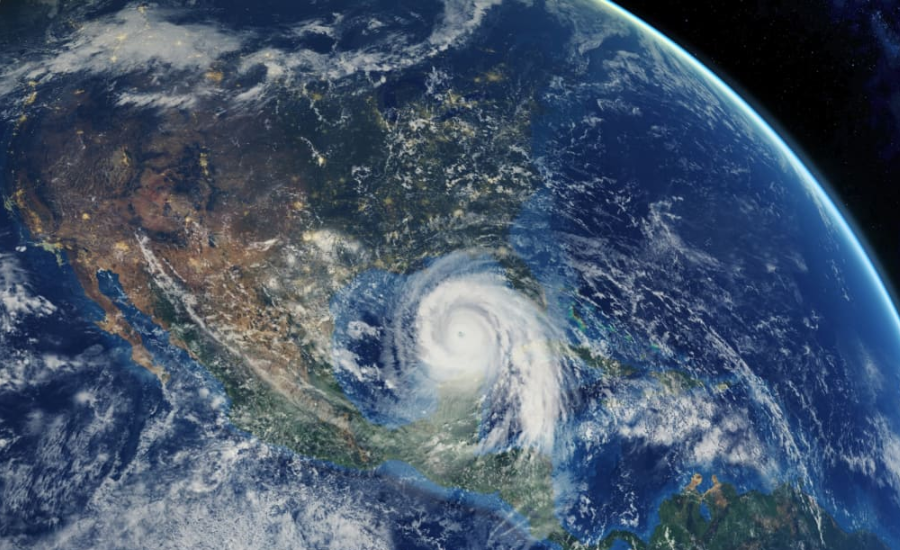
How to Invest in Anticipation of Hurricane Season: Strategies for Navigating Market Opportunities and Risks
With hurricane season on the horizon, investors are increasingly focused on safeguarding their portfolios while seizing market opportunities shaped by severe weather events. Learning how to invest in anticipation of hurricane season can safeguard your assets, ensuring that your portfolio weathers the storm as effectively as your home. The onset of hurricane season presents distinct risks, but for those equipped with the right knowledge, it can also offer unique investment prospects. In this detailed guide, we will delve into effective strategies for protecting your investments, identify sectors that are particularly vulnerable to hurricanes, and provide practical advice for making informed investment choices amidst this unpredictable natural occurrence.
Assessing the Influence of Hurricane Season on Investment Strategies
The Atlantic Basin’s hurricane season spans from June 1 to November 30, with peak activity generally occurring between mid-August and late October. During this period, storms predominantly affect coastal regions, including the Caribbean, Gulf of Mexico, and parts of the eastern United States. The aftermath of hurricanes can be catastrophic, leading to significant damage to infrastructure, utilities, and residential properties. For investors, these predictable weather patterns can greatly influence market dynamics and present both challenges and opportunities. It’s crucial for investors to recognize how these events can affect various sectors, allowing them to make informed decisions that align with market realities.
Certain industries are particularly susceptible to the repercussions of hurricanes. The insurance sector often sees a surge in claims as property damage mounts, affecting profitability and pricing strategies. Meanwhile, the construction industry experiences heightened demand for rebuilding efforts and repairs, driving business opportunities for contractors and suppliers. The home improvement sector also benefits, as homeowners seek materials and services to restore their properties. Additionally, the energy sector faces supply chain disruptions, particularly for oil and gas production in the Gulf of Mexico, which can lead to volatility in energy prices. Retailers may experience fluctuations in supply chains while responding to increased demand for essential goods in storm-affected areas. Understanding these sector-specific impacts can empower investors to navigate the complexities of hurricane season effectively, helping them to capitalize on opportunities while mitigating risks.
Understanding the Economic Impact of Hurricanes

Hurricanes significantly affect the economy, leading to profound consequences across various industries. These natural disasters can inflict billions of dollars in damages, disrupt supply chains, and lead to temporary shortages of essential goods. For investors, these disruptions present a dual-edged sword; while they can diminish portfolio value, they can also create avenues for profit by capitalizing on market fluctuations. Major sectors that typically feel the brunt of hurricanes include insurance, which faces a surge in claims; energy, particularly oil and natural gas production, along with renewable sources; construction, which experiences increased demand for building materials; transportation and logistics, which deal with disrupted routes; and retail, where consumer goods availability can be impacted.
To navigate the challenges of hurricane season effectively, investors must grasp how each sector reacts to these storms. This understanding enables them to identify strategic opportunities for hedging against potential risks or leveraging heightened demand for specific products and services. By staying informed about industry trends and market responses, investors can make informed decisions that not only safeguard their assets but also position them for potential gains in the wake of such unpredictable natural events. Recognizing the interconnectedness of these sectors and their vulnerabilities can lead to more resilient investment strategies during hurricane season.
Strategic Approaches to Hurricane Season Investing
| Strategic Approach | Description |
| Moderation in Investment | Exercise caution when investing by striking a balance between potential profits and possible losses. |
| Identifying Winning Sectors | Concentrate on sectors and stocks that tend to thrive during hurricane events or recover swiftly afterward. |
| Storm and Company Analysis | Conduct thorough analyses of sectors and specific stocks to monitor closely during hurricane season. |
| Target Home Improvement Retailers | Consider investing in major home improvement retailers, such as Home Depot and Lowe’s, which typically see increased demand for supplies and materials. |
| Invest in Construction Companies | Focus on construction firms that benefit from rebuilding efforts following hurricanes, leading to heightened activity in the sector. |
| Focus on Disaster-Specialized Energy Firms | Explore investment opportunities in energy companies that specialize in disaster recovery or provide utility services, as they may present strong growth potential. |
| Watch Logistics and Transport Stocks | Keep an eye on logistics and transportation stocks, which can be volatile but play a crucial role in disaster response and recovery efforts. |
Identifying Key Sectors and Stocks
During hurricane season, certain industries experience pronounced impacts that present both challenges and opportunities for investors. One of the most significantly affected sectors is the insurance industry. Property and casualty insurers often face a surge in claims immediately following hurricanes, which can strain their financial performance in the short term. However, a recovery is typically on the horizon, as these companies adjust their policies and premiums to mitigate future risks. Investors should focus on well-established insurers with robust balance sheets, as they are better positioned to absorb losses while preparing for subsequent storms. Additionally, reinsurance firms, which provide insurance coverage to other insurers, can also offer attractive investment prospects, especially during heightened risk periods when they command higher premiums.
The energy sector is another area heavily influenced by hurricane activity, particularly in regions like the Gulf of Mexico, where oil drilling and production are concentrated. Hurricanes can lead to significant supply disruptions, causing oil prices to spike as refineries and production facilities brace for impact. Investors should pay close attention to energy companies with substantial operations in these vulnerable areas. On the other hand, the rising interest in renewable energy solutions creates additional opportunities. After hurricanes, there is often an increased demand for alternative energy sources, especially when traditional power grids suffer damage. Companies involved in solar, wind energy, and battery storage may experience significant growth as communities seek to rebuild more resilient energy infrastructures.
Moreover, the demand for building materials and construction services tends to skyrocket following hurricanes as communities work to restore homes, businesses, and public infrastructure. Investors should seek out construction companies with a solid presence in hurricane-prone regions, as they are likely to benefit from the post-storm rebuilding efforts. Suppliers of essential materials such as lumber, cement, and heavy equipment are also poised for revenue boosts during this time. Additionally, the transportation and logistics sectors experience considerable disruptions during hurricane events, affecting ports, shipments, and supply chains. While these challenges can be daunting, they also present investment opportunities for firms specializing in logistics management and supply chain solutions. Lastly, retail companies in hurricane-affected areas often see spikes in sales leading up to storms, as consumers stock up on essential supplies. Investing in consumer staples and major retailers that cater to these needs can be a strategic move during the hurricane season.
Understanding Regional and Sectoral Impacts on Investment Decisions

Awareness of regional dynamics is crucial when navigating investment opportunities during hurricane season. Companies that operate in high-risk areas, such as the Gulf of Mexico or the Eastern Seaboard, face significant vulnerabilities during these natural disasters. These regions are more susceptible to the direct impacts of hurricanes, which can result in infrastructure damage, supply chain disruptions, and increased operational costs. Investors must carefully evaluate the geographical footprint of their portfolio companies, as those with concentrated exposure to these storm-prone areas may experience severe financial repercussions. In contrast, businesses that operate on a national or global scale, with diversified interests spread across multiple regions, may be better insulated from the localized effects of hurricanes. This diversification can mitigate risks, allowing these companies to maintain stability and capitalize on opportunities even when specific areas are impacted by severe weather.
Understanding these regional and sectoral dynamics not only aids in risk assessment but also informs strategic investment decisions. For instance, while some sectors may suffer immediate setbacks during hurricane season, others may benefit from increased demand as communities focus on recovery efforts. Companies in construction, building materials, and energy sectors often see a surge in activity following a storm, presenting opportunities for investors willing to look beyond the immediate risks. Furthermore, sectors like insurance may present both challenges and potential gains, as firms recalibrate their pricing strategies in response to increased claims. By comprehensively analyzing the intersection of geographic vulnerability and sector performance, investors can make informed choices that align with their risk tolerance and investment goals, ultimately enhancing their portfolios during the unpredictable hurricane season.
Capitalizing on Post-Hurricane Market Opportunities
In the wake of a hurricane, distinct market dynamics emerge, presenting both immediate and prolonged investment opportunities. Prior to a storm’s arrival, consumers typically flood stores to stock up on essential supplies, leading to a marked surge in sales for retailers specializing in emergency goods. Items such as non-perishable foods, bottled water, generators, and batteries see a dramatic increase in demand, creating a profitable window for investors. Retail giants like Walmart and Target often report significant boosts in same-store sales during these critical times. Investors who strategically position themselves in companies that offer these essential products can realize substantial short-term gains as demand peaks in preparation for the storm.
Once the storm has passed, the focus shifts to recovery and rebuilding, opening the door for long-term investment prospects in the construction and building materials sectors. The aftermath of a hurricane necessitates extensive repairs and infrastructure enhancements, prompting both government and private sector investments in restoration efforts. This sustained demand for materials such as cement, lumber, and heavy machinery can yield considerable returns for investors willing to maintain their stakes throughout the recovery phase. Furthermore, as climate change contributes to the increasing frequency and severity of hurricanes, there is a burgeoning market for innovative solutions in climate-resilient infrastructure and renewable energy. Companies engaged in developing storm-resistant building technologies and sustainable energy alternatives are well-positioned for growth in this evolving landscape. For investors seeking to embrace sustainability while capitalizing on long-term trends, allocating resources to these forward-thinking enterprises can be a strategic move.
Preparing Your Investment Portfolio for Hurricane Season
As hurricane season approaches, a thorough review of your investment portfolio is essential for safeguarding your assets and positioning for potential opportunities. Start by assessing your insurance holdings, particularly if you have investments in property or casualty insurance companies. Ensure these firms maintain adequate reserves and reinsurance to effectively handle a surge in claims that can follow a hurricane. Additionally, for those owning real estate or other significant assets in areas susceptible to hurricanes, it might be prudent to consider enhancing your insurance coverage. This proactive approach can significantly reduce your personal financial exposure in the event of a major storm.
Staying informed about weather patterns and forecasts is another critical strategy for investors during this season. Regularly consult reliable sources, such as the National Hurricane Center, to monitor potential storm activity. Understanding the trajectory and intensity of approaching hurricanes can provide valuable insights for adjusting your investment strategies. For instance, if a major storm is anticipated to impact the Gulf Coast, this could present an opportunity to invest in energy stocks, as disruptions to oil production and logistics often lead to price fluctuations.
Finally, agility is key in a market often influenced by the unpredictability of hurricane-related events. The volatility that characterizes hurricane season can create both risks and opportunities, making it essential for investors to be prepared to rebalance their portfolios as needed. This flexibility not only allows you to capitalize on short-term gains but also helps mitigate potential losses in affected sectors. By staying informed and maintaining a responsive investment strategy, you can navigate the challenges of hurricane season more effectively while positioning yourself for potential growth.
Facts
- Hurricane Season Timing:
The Atlantic hurricane season runs from June 1 to November 30, with the peak typically occurring from mid-August to late October.
- Economic Impact:
Hurricanes can cause billions of dollars in damages, affecting various sectors, including insurance, construction, energy, transportation, and retail.
- Insurance Sector Vulnerability:
Property and casualty insurers often face a surge in claims post-hurricane, impacting their profitability and pricing strategies.
- Construction Boom:
Following a hurricane, there is usually a spike in demand for building materials and construction services as communities focus on recovery efforts.
- Energy Sector Disruption:
Hurricanes can disrupt oil and gas production, particularly in the Gulf of Mexico, leading to volatility in energy prices.
- Retail Sales Surge:
Leading up to a hurricane, retailers of essential goods often experience significant increases in sales as consumers prepare for storms.
FAQs
Q: How can investors prepare their portfolios for hurricane season?
A: Investors should review their insurance coverage, monitor weather patterns, and stay informed about sector-specific impacts to make strategic adjustments to their portfolios.
Q: Which sectors are most affected by hurricanes?
A: The insurance, construction, energy, transportation, and retail sectors are particularly vulnerable during hurricane season, each facing unique challenges and opportunities.
Q: What investment opportunities arise after a hurricane?
A: Post-hurricane, there are opportunities in construction and building materials, as well as in companies specializing in climate-resilient infrastructure and renewable energy solutions.
Q: How can understanding regional impacts aid in investment decisions?
A: Awareness of regional vulnerabilities allows investors to assess risk better and identify which companies may be more resilient or benefit from recovery efforts.
Q: What role does agility play in hurricane season investing?
A: Maintaining flexibility allows investors to respond to market volatility and capitalize on short-term opportunities or hedge against risks effectively.
Related: mt-cap-gent-bloc-chaud-16kw
Conclusion
As hurricane season approaches, investors have a unique opportunity to strategically navigate the market dynamics shaped by these powerful natural events. By understanding the distinct impacts of hurricanes on various sectors, investors can identify both risks and opportunities that arise before, during, and after a storm. Proactive measures, such as reviewing insurance coverage, monitoring weather patterns, and being agile in investment strategies, can help safeguard assets while positioning for potential growth. Ultimately, a well-informed and responsive approach enables investors to effectively manage their portfolios amidst the uncertainties of hurricane season, capitalizing on the market fluctuations that accompany these storms.
Don’t miss out on updates and alerts – stay connected! : Mumbai Breaking

